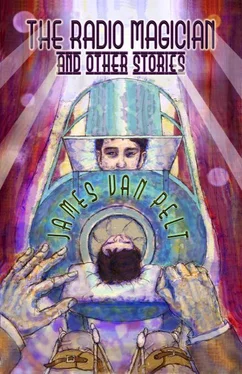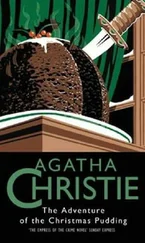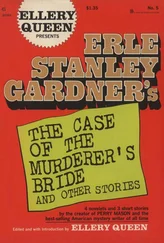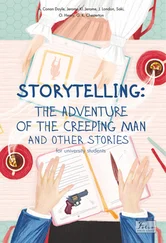Over my shoulder, Elinor’s buglighter is all aglow. She’s a hot one, her. She likes to start these races fast, so she’s storing energy in the field. She’s always got a plan. Plan ahead, that’s her. She didn’t see me in her future, I guess. Cut me loose clean. She likes to fly light.
“Gotcha on my backside, Elinor G.,” I say on a private channel, figuring that it won’t hurt to assay some warmth in her direction.
“Cut the chatter, Delta Mud,” she says. That’s my ship, not me. Feel that way most the time though, just as low down as can be. So I turn up the music. Little bit of Brownie McGhee and Sonny Terry, “Blues from the Lowlands.” I got ’em too. Got ’em bad. Don’t know why you’re sayin’ no to me, Elinor G.
Nothing to do then except study the course ahead, sending out some high-imaging radar. It shows me what to miss—klunking into a chunk of ring matter bigger than a football or so at 50,000 kph would put a dent in my day, and, of course, it’ll send that rock flying like a cannonball in the opposite direction—but, it doesn’t show me where to go: the rich sand and pebbles I can eat up and convert to thrust. That’s the art and joy of ring running: dodging the big ones; following the fuel, shooting fast around the ring without spinning out.
My first two chords are clear, but after that, I’ll be checking as I go: thousands of kph, glimpsing ahead for widow-makers on the high wire edge of the ring. It’s only a kilometer wide, generally, at least only a kilometer of usable rock.
Ring racing is in the chords’ progression and rhythm—like the blues—cutting across the arc of the orbit’s circle. The way I fly, the shorter the chords, the faster the ship. Look and blast, look and blast. Can’t look while you’re blasting (too much interference); can’t blast without looking (otherwise you’d be sure to fetch up against some pocky chunk of rock, big as a barn and your race would be over forever). It’s a funny looking race, if you diagram it. Put two circles on a piece of paper, one inside the other, and the outside one not too much bigger than the inner. That inside circle is Saturn. The outside one is the inner edge of the ring. Now, take a ruler and draw a straight line that connects two points of the outer circle without crossing the inner circle. That’s one chord. If you keep drawing chords, you end up with a polygon that goes around the planet. That’s the race.
My angle of entry into the rings is shallow, and most of the bigger rocks are deeper in, so I minimize risk while maximizing speed. Elinor, though, she takes these long chords, building up speed on each one; each one dives her deeper into the ring. It’s scary genius at work to watch her fly.
So I keep the chords short to play those high speed blues. I take out my c-harp and blow a few chords of my own—still nothing better than a Marine Band harmonica. Well engineered instrument, the harmonica: light, compact, fits in the hand, feels cool on the lips. Good acoustics in a buglighter too. Echoes back in nice and tight, like singing in a shower. I try out a new line for my Elinor Blues. “Elinor, Elinor, you don’t be coming round anymore.” A common blue’s pattern is statement, repeat and a variation. Got the statement and repeat down pat, but don’t know a variation yet. I try one out. Five minutes is a long time for a race to start.
“Elinor, Elinor, you don’t be coming round anymore.
Elinor, Elinor, you don’t be coming round anymore.
Been five long years, baby. Waitin’s been such a chore.”
Can’t think of her as “baby.” She’s all hard muscle and physic’s-brain bright. Give her enough numbers and just enough fuel, and she could with one solid blow, dead-stick the rest of the way a course from the moon, Rhe, to Titan and not miss her orbit slot by a couple of meters. But every guy singing the blues calls his baby, baby.
The signal starts the race. Elinor and a couple others blast on the dot, brightness enveloping their buglighters, glowing like acetylene teardrops. My ship gathers in sand, sucks in a larger pebble or two, most of the mass converted into energy. Screen shows I’ve got a clear shot deeper into the ring. Greater chance of crashing into something, but the usable detritus is thicker. Let it go all at once. The good, solid thump of the nuclear explosion behind me pushes me into my seat. Thank god for inertia dampers, otherwise I’d be a thin jelly on the back wall of the cabin.
Right off, rocks start clattering against the bubble, lost in bright sparks. I’ve gained speed, moved up in the orbit, further into the dust.
We run the race on the inner edge of the “B” ring, the bright one you can even see from Earth with a reasonable telescope. The “C” ring below is much thinner. Hard to guarantee you’ll find rock to blast with when you need it. The “A” ring is farther out; it’s got that cool gap in it where the moon, Pan, orbits.
In my monitor, I see Elinor’s ship. She’s taken a long chord as her first jump, crossing all that mostly empty space. It’s a shorter distance to go around, as I mentioned, but a riskier tactic.
“You like a brief life, Elinor?” I say.
“Brief and bright,” she says.
I do some quick calculations and whistle in appreciation. She’ll dive into the ring for a couple of hundred Kmeters before she’ll have the energy for her next blast. Her radar can’t penetrate that deep. Too much intervening sand.
“Going for the record?”
“Already got it,” she says.
And she does; won last year, and I pulled up a lame second.
Time for the next blast. Race like this is an art. Sort of a mix between orbital mechanics, demolition derby and pool; the whole thing done with your heart gripped firmly between your teeth so you don’t lose it.
“Going slow there, Delta Mud,” she says, but I can’t answer before I slam through the burn. Bubbles go white and glorious as they store up the energy, then release it all at once. Can’t hear it, naturally, though my music gets fuzzy during; way too much radiant activity to avoid that, and the inertia dampers don’t completely mask the thrust of it. My seat presses hard into my back. I feel every wrinkle in my shirt.
Monitors are clear. Nothing in my way, so I set up for the next chord.
“Eaten any cold dinners lately?” I say.
“No,” she says. “Have you?”
I let that question hang out there a while. It’s a friendly response, if I hear it right, and probably because she’s got an early lead. Use to be I’d go visit her for dinner pretty regular, and we never did get right to eating it. One thing lead to another, you know, and the dinner would cool off.
So an answer takes a bit of thinking. Is she opening the door here? Are all those cold, cold nights looking out at lonely stars about to come to an end?
I wish I could see her. You know, to watch her face. She’s got this way of letting the corners of her mouth twitch up when she’s making a joke. It’s real subtle. Lots of folk don’t notice. And she shakes her head sometimes, like she’s getting hair out of her eyes, though her hair is spacer-short.
How’s she looking now? What I need is a deep-imaging radar of the heart. Something to peer in there to check on those pocky rocks drifting unseen.
She’s about to end a chord, so I check her progress.
Ring racing is the hardest kind there is. Straight races… well, they’re simple. Thrust behind mass, and don’t miss. Best technology wins. Pilot might as well stay home (singing the blues). But here—whew! Faster you go, the more dangerous it is. More chances for mistakes. Less time for decisions. All the time risking spinout, missing the ring, flying off with better than escape velocity and no mass anywhere to grab.
Читать дальше












